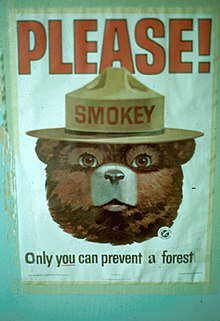
Back Аперацыя «Работнік ранча» Byelorussian Oberiadur brezel Ranch Hand Breton Operace Ranch Hand Czech Operation Ranch Hand German Operación Ranch Hand Spanish عملیات کارگر مزرعه Persian Operaatio Ranch Hand Finnish Opération Ranch Hand French Ranch Hand hadművelet Hungarian Operazione Ranch Hand Italian


Operation Ranch Hand was a U.S. military operation during the Vietnam War, lasting from 1962 until 1971. Largely inspired by the British use of chemicals 2,4,5-T and 2,4-D (Agent Orange) during the Malayan Emergency in the 1950s, it was part of the overall herbicidal warfare program during the war called "Operation Trail Dust". Ranch Hand involved spraying an estimated 19 million U.S. gallons (72,000 m3) of defoliants and herbicides[1] over rural areas of South Vietnam in an attempt to deprive the Viet Cong of food and vegetation cover. Areas of Laos and Cambodia were also sprayed to a lesser extent. According to the Vietnamese government, the chemicals caused 400,000 deaths.[2] The United States government has described these figures as unreliable.[3]
Nearly 20,000 sorties were flown between 1961 and 1971.[citation needed] The "Ranch Handers" motto was "Only you can prevent a forest"[1] – a take on the popular U.S. Forest Service poster slogan of Smokey Bear. During the ten years of spraying, over 5 million acres (20,000 km2) of forest and 500,000 acres (2,000 km2) of crops were heavily damaged or destroyed. Around 20% of the forests of South Vietnam were sprayed at least once.[4]
The herbicides were sprayed by the U.S. Air Force flying C-123s using the call sign "Hades". The planes were fitted with specially developed spray tanks with a capacity of 1,000 U.S. gallons (4 m3) of herbicides. A plane sprayed a swath of land that was 80 m (260 ft) wide and 16 km (9.9 mi) long in about 4½ minutes, at a rate of about 3 U.S. gallons per acre (3 m3/km2).[5] Sorties usually consisted of three to five aircraft flying side by side. 95% of the herbicides and defoliants used in the war were sprayed by the U.S. Air Force as part of Operation Ranch Hand. The remaining 5% were sprayed by the U.S. Chemical Corps, other military branches, and the Republic of Vietnam using hand sprayers, spray trucks, helicopters and boats, primarily around U.S. military installations.[6]
- ^ a b Lewis, James G. (2006). "Smokey Bear in Vietnam". Environmental History. 11 (3): 598–603. doi:10.1093/envhis/11.3.598.
- ^ Cite error: The named reference
reuterswas invoked but never defined (see the help page). - ^ Cite error: The named reference
ReferenceBwas invoked but never defined (see the help page). - ^ Vo Quy, "Statement to the House Subcommittee on Asia, the Pacific and Global Environment," 4 June 2009.
- ^ Buckingham, William A. Jr. (1982). Operation Ranch Hand: The Air Force and Herbicides in Southeast Asia 1961-1971 (PDF). Washington, DC: Office of Air Force History. p. 132. ISBN 978-0-87000-466-7. Archived from the original (PDF) on 23 November 2016. Retrieved 1 February 2014.
- ^ Stellman, Jeanne et al. "The extent and patterns of usage of Agent Orange and other herbicides in Vietnam." Nature. Vol 422. pg 681
© MMXXIII Rich X Search. We shall prevail. All rights reserved. Rich X Search